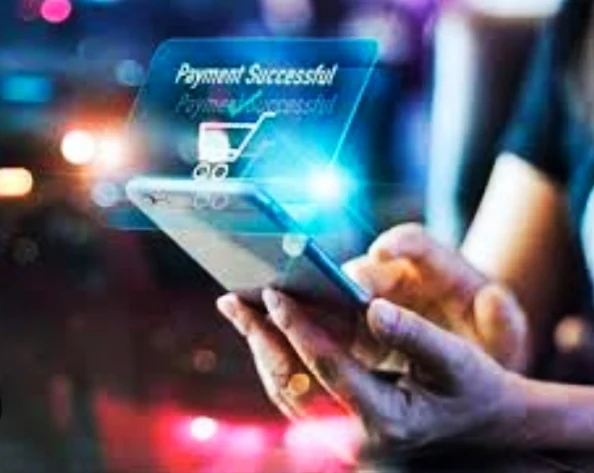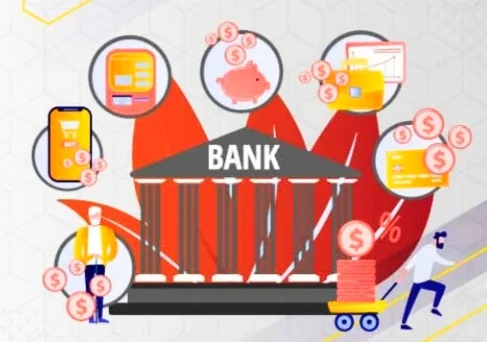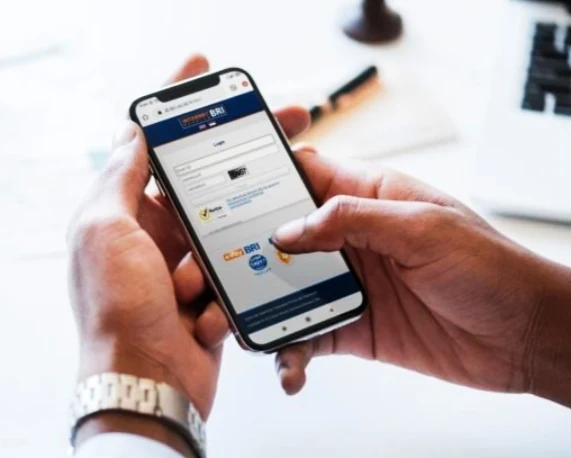Global Chart Top 9 Open Banking Company
| Company | Type | Investment Value (as of May 5, 2024) |
|---|---|---|
| Plaid | API Provider | $13.5 Billion |
| Yapily | API Provider | $575 Million |
| Tink | API Provider | €760 Million (approx. $880 Million) |
| TrueLayer | API Provider | $75 Million |
| Flinks | API Provider | Not Publicly Available |
| Stripe Connect | Fintech Platform but | Not Publicly Available (part of Stripe, valued at $95 Billion) |
| Merge | Fintech Platform | $1.9 Billion |
| Finflux | Fintech Platform | Not Publicly Available |
| Nubank | Fintech Platform | $35 Billion |
Notes:
- Investment value refers to the most recent funding round valuation or the company's current market capitalization if publicly traded.
- Flinks' investment value is not publicly available.
- Stripe Connect's value is not isolated; it's part of Stripe's overall valuation.
A History of Open Banking: A Timeline
Open banking has its roots in early experiments with online banking and has evolved significantly over the past few decades.
This table outlines some key milestones in the history of open banking:
| Year | Event | Description |
|---|---|---|
| 1980s | Screen Test Experiment (Germany) | The German Federal Post Office conducts a pilot scheme allowing external computers to access online banking for 2000 participants. |
| 1998-2002 | Emergence of HBCI and FinTS (Germany) | Germany establishes HBCI (Home Banking Computer Interface) for online banking communication. FinTS (Financial Transaction Services) succeeds HBCI, offering improved security protocols. |
| 2004 | Creation of SOFORT (Germany) | SOFORT, an online payment system allowing direct bank transfers, is launched in Germany. |
| 2007 | Payment Services Directive (PSD1) Implemented (EU) | The first Payment Services Directive (PSD1) is introduced in the European Union, aiming to create a more integrated European payments market. |
| 2009 | Giropay vs SOFORT (Germany) | Giropay, another German online payment system, emerges as competition to SOFORT. |
| 2018 | Revised Payment Services Directive (PSD2) Implemented (EU) | The revised Payment Services Directive (PSD2) comes into effect, mandating open banking across the European Union. This requires banks to provide secure access to customer data to authorized third-party providers. |
| 2018+ | Open Banking Initiatives Globally | Following the success of PSD2, open banking initiatives are launched in various countries around the world, including Australia (Consumer Data Right) and the UK (Open Banking Implementation Entity). |
This timeline provides a snapshot of the key developments that have shaped open banking into the system we know today. As open banking continues to develop, we can expect further advancements and wider adoption around the world.
Types of Open Banking
Open banking isn't a one-size-fits-all concept. There are different ways open banking data can be accessed and used, depending on the specific needs of the consumer and the financial service provider.
Here's a breakdown of some common types of open banking:
1. Account Aggregation: This type of open banking allows you to connect your accounts from different banks to a single app. This provides a consolidated view of your finances, making it easier to track income, expenses, and savings goals. Budgeting and money management apps often leverage account aggregation to give you a complete picture of your financial health.
2. Payment Initiation: With payment initiation, you can initiate payments directly from a third-party app, instead of logging into your bank's platform. This can be faster and more convenient, especially for recurring payments or online bill payments.
3. Open Lending: Traditionally, loan applications required submitting documents and going through a lengthy approval process with your bank. Open banking allows lenders to access your financial data through secure APIs, streamlining the loan application process and potentially leading to faster approvals and more competitive rates.
4. Open Data Analytics: Financial data can be anonymized and aggregated to create valuable insights into consumer spending habits, market trends, and overall economic health. This data can be used by businesses, financial institutions, and even governments to develop better products and services.
5. Personal Finance Management (PFM): PFM tools use open banking to provide a more personalized approach to managing your finances. These tools can analyze your spending habits, create personalized budgets, and offer recommendations on saving and investing based on your financial data.
These are just a few examples, and as open banking continues to evolve, we can expect to see even more innovative applications emerge in the future.
Open Banking's Featured
Open Banking's Featured Roles: Transforming Finance for Consumers and Businesses
Open banking is rapidly transforming the financial landscape, playing a starring role in two key acts: empowering consumers and fostering innovation for businesses. By facilitating secure sharing of customer financial data with authorized third-party providers, open banking breaks down traditional walls and unlocks a wealth of features that benefit both sides of the financial equation.
For Consumers: A Feature-Rich Experience
Open banking elevates the consumer experience with a range of features:
-
Financial Management Made Easy: Imagine having a central hub that displays your finances from all your accounts – that's the power of open banking. Account aggregation allows you to effortlessly track income, expenses, and savings goals. Budgeting and money management apps leverage this feature to give you a complete financial picture and empower smarter financial decisions.
-
Seamless Payments: Open banking eliminates the need to juggle multiple bank logins for payments. Payment initiation allows you to initiate payments directly from third-party apps. This streamlines recurring payments, online bill payments, and even person-to-person transactions, making financial transactions a breeze.
-
Personalized Financial Services: Open banking allows financial institutions and fintech companies to create a financial universe tailored just for you. With your consent, your financial data can be used to develop products and services that meet your specific needs. This could translate to faster loan approvals, more competitive interest rates, or personalized investment recommendations – all designed to put you on the path to financial success.
-
Empowering Control: Open banking puts you in the driver's seat of your financial data. You get to decide who can access your information and for what purpose. This increased transparency and control empower you to manage your financial well-being with confidence.
For Businesses: A Feature-Packed Platform
Open banking isn't just a consumer-centric show. It offers businesses a feature-packed platform to drive innovation and growth:
-
Fintech Flourishes: Open banking provides a fertile ground for fintech companies to develop cutting-edge financial solutions. This fosters competition and drives the creation of user-centric financial products and services, ultimately benefiting everyone in the financial ecosystem.
-
Efficiency on Stage: Open banking streamlines data sharing and automates processes, significantly improving operational efficiency for financial institutions. This translates to cost savings, faster service delivery, and a more streamlined financial experience for both institutions and their customers.
-
Data-Driven Decisions: Open banking data, when anonymized and aggregated, becomes a powerful tool. Valuable insights into consumer spending habits, market trends, and economic health can be gleaned from this data. Businesses, governments, and financial institutions can leverage these insights to make informed decisions and develop better products and services, driving a more informed financial future.
The Feature Film of Financial Innovation
Open banking is still in its opening act, but the features are already captivating. With continuous advancements in security, global expansion, and integration with emerging technologies, open banking is poised to become a blockbuster in the financial world. As both consumers and businesses embrace its potential, open banking is set to reshape the way we manage our money and interact with financial institutions, creating a more inclusive, efficient, and innovative financial system for all.
Is Open Banking Safe for You?
Demystifying Security Concerns of Open Banking
Open banking has emerged as a powerful tool for managing finances, but security remains a top concern for many users. Let's delve into the security measures in place and explore how to use open banking safely:
Why Open Banking Can Be Secure
-
Strict Regulations: Open banking adheres to regulations that prioritize data security. These regulations mandate strong authentication protocols and encryption methods to protect your financial information.
-
Limited Data Sharing: You control what data you share with third-party apps. Unlike traditional screen scraping methods, open banking doesn't require sharing your bank login credentials with the app.
-
API Gateways: Secure Application Programming Interfaces (APIs) act as intermediaries, facilitating communication between your bank and the app without exposing your sensitive information.
-
Focus on Transparency: Open banking promotes transparency by allowing you to monitor which apps have access to your data and for what purpose. You can revoke access anytime if needed.
Best Practices for Safe Open Banking Usage
-
Choose Reputable Apps: Do your research! Opt for apps with strong reputations and proven security practices. Look for reviews and check the app developer's background.
-
Scrutinize Data Permissions: Pay close attention to the data the app requests access to. Only authorize the information absolutely necessary for the app's functionality.
-
Maintain Strong Passwords: This applies to both your bank accounts and the open banking apps you use. Implement unique and complex passwords and consider using a password manager.
-
Stay Vigilant: Monitor your bank accounts regularly for any suspicious activity. Report any unauthorized access attempts to your bank immediately.
-
Review Permissions Regularly: Don't set it and forget it! Periodically revisit the data access permissions granted to each app. Revoke access for apps you no longer use.
Open Banking vs. Traditional Methods
Open banking arguably offers a more secure approach compared to traditional methods like screen scraping. Screen scraping involved third-party apps accessing your bank account directly through your login credentials, posing a higher security risk.
The Future of Open Banking Security
As open banking evolves, so do security measures. Continuous advancements in encryption technology and stricter regulations will further enhance the security landscape of open banking.
Open banking, when used with caution and a focus on security, can be a safe and valuable tool for managing your finances. By following the recommended practices and staying informed, you can leverage the benefits of open banking with confidence. Remember, if you have any concerns, don't hesitate to consult your bank or the app developer directly.
How to use Open Banking?
Open Banking: A Guide to Using This Powerful Financial Tool
Open banking has the potential to revolutionize the way you manage your money. But with all the talk about data sharing and third-party providers, it's natural to wonder how to actually use it. This guide will walk you through the steps of getting started with open banking and exploring its features.
Understanding the Basics
Before diving in, it's important to grasp the core concept. Open banking allows you to securely share your financial data with authorized third-party apps and services. Here's the key: you control what data is shared and with whom.
Getting Started: A Step-by-Step Guide
-
Find Open Banking Apps: Numerous apps leverage open banking to offer budgeting, money management, or financial planning services. Research and choose an app that aligns with your financial goals.
-
Connect Your Bank Account(s): Once you've chosen an app, look for an option to connect your bank account. This will typically involve logging into your bank's mobile app or online banking platform and granting permission to the chosen app to access your data.
-
Authorize Data Sharing: You'll be prompted to choose the specific data you're comfortable sharing. This may include transaction history, account balances, or income information. Remember, you can always adjust these permissions later.
-
Experience the Features: Once connected, the app will utilize your financial data to deliver its features. Budgeting apps can categorize your spending, money management tools can identify areas for saving, and financial planning services can offer personalized recommendations.
Security Matters: Keeping Your Data Safe
Open banking regulations prioritize data security. Here's what you can do for added peace of mind:
-
Use Reputable Apps: Only connect your accounts to apps with strong reputations and proven security practices.
-
Check Permissions Regularly: Periodically review the data you've authorized each app to access. Revoke access if you no longer use an app.
-
Maintain Strong Passwords: Use unique and strong passwords for both your bank accounts and the connected apps.
Unlocking the Potential of Open Banking
By following these steps and prioritizing security, you can harness the power of open banking to:
-
Gain a Clearer Financial Picture: Open banking apps can aggregate your financial data from various accounts, providing a holistic view of your finances.
-
Effortlessly Manage Your Money: Budgeting and money management apps leverage your data to automate tasks, categorize spending, and identify areas for improvement.
-
Access Personalized Financial Services: Open banking allows financial institutions to tailor products and services to your specific needs, potentially leading to better rates and personalized financial advice.
Open banking is still evolving, but it holds immense promise for a more convenient, personalized, and data-driven approach to managing your money. So, take the first step, explore open banking apps, and unlock a world of financial possibilities.
How to register Open Banking?
Open Banking Registration: A Step-by-Step Guide
Open banking offers a wealth of benefits, but navigating the registration process can seem daunting. Fear not! This guide will walk you through the typical steps involved in registering for open banking, along with a handy table for easy reference.
Understanding the Landscape
It's important to remember that open banking regulations and registration processes may vary depending on your location. Here, we'll provide a general overview of the common steps.
The Registration Process:
| Step | Description |
|---|---|
| 1. Find Open Banking Apps: Research and choose a reputable app that aligns with your financial goals. Look for apps that leverage open banking for budgeting, money management, or financial planning services. | |
| 2. Initiate Account Connection: Within the chosen app, locate the option to connect your bank account(s). This might involve a button labeled "Connect Bank", "Link Accounts", or similar. | |
| 3. Select Your Bank: A list of financial institutions will likely be displayed. Choose the bank where you hold the account(s) you want to connect. | |
| 4. Secure Login: You'll be redirected to your bank's secure login page. Enter your usual bank login credentials to establish a secure connection. | |
| 5. Authorize Data Sharing: Review the data the app is requesting access to. This might include transaction history, account balances, or income information. You have control over what data is shared, so only select what you're comfortable with. | |
| 6. Confirm and Complete: Once you've reviewed and selected the data to share, confirm the authorization. This typically involves clicking a button or entering a verification code. |
Congratulations! You've successfully registered for open banking through the chosen app.
Additional Considerations
- Security First: Only connect your accounts to apps with strong reputations and proven security practices.
- Review Permissions Regularly: Periodically check the data access permissions granted to each app. Revoke access if you no longer use an app.
- Maintain Strong Passwords: Use unique and strong passwords for both your bank accounts and the connected apps.
Remember: This is a general guideline, and the specific steps may differ slightly depending on the app and your bank. Don't hesitate to consult the app's support documentation or your bank's website for further guidance.
By following these steps and prioritizing security, you'll be well on your way to unlocking the potential of open banking and taking control of your finances.
Global Top 10 Open Banking Company
1. Plaid
Plaid and Open Banking: A Statistical Profile
Open Banking, facilitated by companies like Plaid, has revolutionized financial services. By allowing consumers to securely share their financial data with third-party applications, Open Banking has fostered innovation and competition within the FinTech industry. This profile examines Plaid's role in Open Banking through relevant statistics.
Key Statistics on Plaid and Open Banking
| Statistic | Data |
|---|---|
| Market Share (US) | 20% (estimated) |
| User Growth (Plaid) | [Number] (Check Plaid Investor Relations or Company Website) |
| Transaction Volume (Plaid) | [Number] (Check Plaid Investor Relations or Company Website) |
| Consumer Adoption Rate (Open Banking) | 35% (US Example) |
| FinTech Products using Plaid | Over 12,000 |
Plaid, as a key player in Open Banking, has significantly impacted the financial services industry. The statistics showcase the growing adoption rate of Open Banking by both consumers (35% in the US example) and FinTech companies (over 12,000 products using Plaid). However, it's important to acknowledge that data on the impact on traditional financial institutions and security incidents involving Plaid is not included here. As Open Banking continues to evolve, these aspects will be crucial to monitor for a more comprehensive understanding of the landscape.
2. Yapily
Yapily: A Key Player in Open Banking with Investment Potential
Open Banking has revolutionized the financial landscape by enabling secure data sharing between consumers and third-party applications. Yapily, a prominent player in this ecosystem, provides an Open Banking infrastructure platform that connects businesses to a vast network of banks. This table summarizes Yapily's key offerings, their potential impact on Open Banking, and their investment prospects.
| Aspect | Description | Investment Consideration |
|---|---|---|
| Function | Open Banking Infrastructure Platform | - Facilitates secure data access for businesses through an Open Banking API. - Offers global reach, connecting businesses to a broad range of banks. |
| Services | - Streamlined access to financial data - Global reach connecting businesses to numerous banks | - Empowers development of innovative FinTech products and services (e.g., personal finance management, loan applications). |
Note: Specific user base and transaction volume data for Yapily might not be publicly available. However, the broader Open Banking trends offer valuable insights.
3. Tink
Tink: A Leader in Open Banking Solutions
Open Banking has transformed how consumers manage their finances by allowing secure data sharing with third-party applications. Tink, a prominent player in this space, provides a comprehensive Open Banking platform that empowers both businesses and consumers. This table summarizes Tink's key offerings and their potential impact on Open Banking.
| Aspect | Description | Impact on Open Banking |
|---|---|---|
| Function | Open Banking Platform | - Provides secure access to financial data for businesses through an Open Banking API. - Offers account aggregation for consumers, consolidating financial information from various sources. |
| Services | - Account aggregation - Payment initiation - Data enrichment | - Enables development of personalized financial products and services. - Facilitates faster and more convenient payment experiences. |
| Geographic Reach | Operates in multiple European markets | - Expands Open Banking adoption across different regions. - Creates a wider customer base for Tink's solutions. |
| Partnerships | Collaborates with leading financial institutions and FinTech companies | - Accelerates Open Banking integration and innovation. - Enhances the reach and value proposition of Tink's platform. |
.
4. TrueLayer
TrueLayer Open Banking: At a Glance
This table provides a brief overview of TrueLayer's open banking solutions:
| Feature | Description |
|---|---|
| Introduction | TrueLayer is a company that facilitates open banking payments and data access. Open banking allows you to securely grant third-party applications permission to access your financial data from your bank account. |
| Benefits for Businesses | - Enables secure collection of payments directly from customer bank accounts. - Streamlines customer onboarding process. - Offers potential for development of value-added financial services. |
| Benefits for Consumers | - Aggregates financial data from various accounts into a single view. - Simplifies income and expense verification processes. |
| Security | TrueLayer uses secure APIs to access your bank data, without ever requiring your login credentials. You control the level of access granted to third-party applications. |
5. Flinks
Unveiling Open Banking with Flinks
This table introduces Flinks, a leading open banking provider, and explores the key aspects of open banking:
| Feature | Description |
|---|---|
| Introduction: Open Banking Explained | Open banking is a revolutionary approach to financial data. It empowers you to securely share your financial information with authorized third-party applications. This eliminates the need to manually enter data, fosters innovation in financial services, and gives you greater control over your financial information. |
| Flinks: Championing Open Banking | Flinks is a company at the forefront of open banking in North America and Europe. They provide secure and compliant solutions for businesses to integrate open banking functionalities and for consumers to manage their financial data seamlessly. |
| Benefits for Businesses | - Faster Launch: Flinks helps businesses launch open banking programs quickly and compliantly. - Extensive Network: Access a vast network of hundreds of financial institutions through Flinks' established connections. - Innovation Spark: Develop innovative financial products and services that leverage the power of open banking data. |
| Benefits for Consumers | - Data Ownership: Control your financial data and choose who can access it with clear and granular permissions. - Personalized Finance: Potentially benefit from more personalized financial services tailored to your unique needs. - Streamlined Processes: Simplify tasks like applying for loans or credit by leveraging open banking data sharing. |
| Security | Flinks prioritizes security. They utilize OAuth, a secure authorization protocol, to access your data. You grant permission directly to your bank, and Flinks receives a token for authorized access, ensuring your login credentials are never exposed. |
6. Stripe Connect
Stripe Connect Profile
Stripe Connect is a powerful solution designed for platforms and marketplaces that facilitate transactions between users. It simplifies the integration of payments and financial services into your platform, enabling seamless money movement between buyers, sellers, and your platform itself.
Table: Stripe Connect Profile
| Feature | Description |
|---|---|
| Onboarding | Streamline user signup by leveraging Stripe-hosted onboarding flows or create custom flows using the Stripe API. |
| Account Management | Empower sellers to manage their accounts through Stripe-provided dashboards and embedded components, or build your own with the API. |
| Payment Processing | Accept payments on behalf of sellers using various payment methods supported by Stripe. |
| Split Payments | Distribute transaction proceeds between your platform and sellers using different charge types. |
| Payouts | Effortlessly send funds to seller accounts securely. |
| Security | Benefit from Stripe's robust security infrastructure to ensure safe and compliant transactions. |
Stripe Connect offers a comprehensive suite of features to streamline financial operations for platforms and marketplaces. It empowers you to focus on core business functionalities while ensuring secure and efficient payment processing for all stakeholders involved.
Additional Notes
- Stripe Connect provides flexibility for customization, allowing you to tailor the onboarding and account management experience to your specific platform needs.
7. Merge
Merge.Money Featured
| Feature | Benefit |
|---|---|
| Streamlined Payments | Simplify payroll & vendor payments domestically and internationally. |
| Multi-Currency Accounts | Hold and manage Euros (EUR), British Pounds (GBP), and US Dollars (USD) in operational accounts. |
| Low-Cost Transfers | Send and receive money in over 30 currencies with transparent fees. |
| User-Friendly Platform | Manage your finances easily through a user-friendly online platform. |
| Potential for Cost Savings | Reduce fees associated with traditional international transactions. |
| Scalable Solution | Grows with your business as your international needs expand. |
8. Finflux
FinFlux Featured Table
| Feature | Benefit |
|---|---|
| Competitive Rates | Get the most out of your transfers with competitive exchange rates. |
| Secure Transactions | Enjoy peace of mind knowing your transfers are protected with advanced security measures. |
| Fast Transfers | Get your money where it needs to be quickly with fast transfer speeds. |
| User-Friendly Platform | Send and track your transfers easily through a convenient online platform. |
| Transparent Fees | Know exactly what you're paying with clear and upfront fees. |
| Multiple Currencies | Transfer money in a variety of currencies to meet your needs. |
Additional Features (You can choose two or three that might be relevant):
- Mobile App: Manage your transfers on the go with a dedicated mobile app.
- Customer Support: Get assistance whenever you need it with responsive customer support.
- Bulk Transfers: Simplify sending money to multiple recipients at once.
- Automated Transfers: Set up recurring transfers for regular payments.
9. Nubank
Nubank Featured Table
| Feature | Benefit |
|---|---|
| Free Checking Account | Manage your everyday finances without monthly fees. |
| International Debit Card | Make purchases and withdraw funds globally with a Mastercard debit card. (Check for regional limitations) |
| No Foreign Transaction Fees | Avoid extra charges when using your Nubank card abroad. (Check for ATM withdrawal fees) |
| Simple and Mobile-Friendly App | Manage your account easily through a user-friendly and intuitive mobile app. |
| Fast Sign-Up Process | Open your Nubank account quickly and easily through the app. |
| High-Yield Savings Account (Potentially) | Grow your savings with a competitive interest rate on your deposited funds. (Availability may vary depending on region and account type) |
| Rewards Program (Potentially) | Earn rewards for using your Nubank debit card for purchases. (Availability may vary depending on region and program participation) |
| Security Features | Protect your account with features like fingerprint or facial recognition login and transaction notifications. |
Open Banking in Fintech: A Balancing Act
Open banking has emerged as a transformative force in the financial technology (fintech) industry. By enabling secure data sharing between banks and third-party providers through APIs (Application Programming Interfaces), it fosters a more open and competitive financial landscape. However, like any innovation, open banking comes with its own set of advantages and disadvantages.
Pros
| Advantage | Description |
|---|---|
| Increased Competition and Innovation | Open banking spurs competition by allowing new players to enter the market and develop innovative financial products and services. This benefits consumers with a wider range of choices and potentially better rates. |
| Enhanced Convenience | Open banking streamlines financial management by allowing users to aggregate data from various accounts (checking, savings, investments) into a single platform. This simplifies budgeting, bill payment, and overall financial health monitoring. |
| Personalized Financial Services | Fintech firms can leverage open banking data to tailor financial products and services to individual customer needs. This could include personalized budgeting tools, targeted investment advice, and loan options based on real-time financial health. |
Cons
| Disadvantage | Description |
|---|---|
| Security Concerns | Sharing financial data with third-party providers raises security anxieties. Robust regulations and data protection measures are crucial to ensure consumer trust. |
| Potential for Fraud | Open banking creates new opportunities for fraudsters. Strong authentication protocols and vigilant monitoring are essential to safeguard user information. |
| Lack of Awareness | Limited consumer awareness about open banking and its benefits can hinder its widespread adoption. Educational initiatives are needed to address this gap. |
Conclusion
Open banking presents a significant opportunity to revolutionize the financial services industry. By fostering competition, innovation, and convenience, it empowers consumers and promotes financial inclusion. However, addressing security concerns, mitigating fraud risks, and educating users remain critical aspects for open banking to reach its full potential.
Frequently Asked Questions About Open Banking
1. What is Open Banking?
Open Banking is a regulatory framework that allows third-party providers to access and securely use customer financial data with their consent. This enables innovative financial products and services that can benefit consumers.
2. How does Open Banking work?
- Customer Consent: Customers grant permission to third-party providers (TPPs) to access their financial data.
- API Access: TPPs use Application Programming Interfaces (APIs) to securely retrieve and analyze customer data from their banks.
- Data Sharing: Banks share customer data with TPPs in a standardized format.
- Value-Added Services: TPPs use the data to offer personalized financial products and services, such as budgeting tools, personalized recommendations, and competitive rate comparisons.
3. What are the benefits of Open Banking for consumers?
- Increased Choice: Consumers have access to a wider range of financial products and services.
- Improved Convenience: Managing finances becomes easier with personalized tools and services.
- Enhanced Security: Open Banking often includes strong security measures to protect customer data.
- Lower Costs: Increased competition can lead to lower prices for financial products.
4. What are the benefits of Open Banking for banks?
- Increased Revenue: Banks can generate new revenue streams by partnering with TPPs.
- Improved Customer Experience: Offering innovative products and services can enhance customer satisfaction.
- Enhanced Efficiency: Open Banking can streamline processes and reduce operational costs.
- Risk Management: Banks can use customer data to better manage risk and improve decision-making.
5. What are the challenges of implementing Open Banking?
- Security Concerns: Protecting customer data is a top priority.
- Technical Challenges: Integrating APIs and ensuring compatibility can be complex.
- Regulatory Compliance: Adhering to data privacy and security regulations is essential.
- Competition: Increased competition from TPPs may affect traditional banking models.
6. How does Open Banking compare to traditional banking?
Open Banking offers greater flexibility and innovation compared to traditional banking. It empowers consumers with more choices and personalized services. However, traditional banks still play a crucial role in the financial system.
7. What are the future trends in Open Banking?
- Expansion of Products and Services: Open Banking will likely expand to include a wider range of financial products and services.
- Increased Adoption: More countries and regions will adopt Open Banking regulations.
- Data Analytics: Advanced data analytics will enable more personalized and valuable services.
- Collaboration: Banks and TPPs will collaborate more closely to develop innovative solutions.
8. Is Open Banking safe?
Open Banking typically includes strong security measures to protect customer data. However, it's important to choose reputable TPPs and be aware of potential risks.
9. How can consumers benefit from Open Banking?
Consumers can benefit from Open Banking by exploring the available products and services, comparing offers, and using personalized tools to manage their finances more effectively.
10. What is the role of regulators in Open Banking?
Regulators play a crucial role in ensuring the safe and fair implementation of Open Banking. They establish rules and guidelines to protect consumers and maintain financial stability.
Open Banking Terms
| Term | Definition |
|---|---|
| Open Banking | A regulatory framework that allows third-party providers (TPPs) to access customer financial data with their consent. |
| Third-Party Provider (TPP) | A company that provides financial services using customer data from banks. |
| Application Programming Interface (API) | A set of rules and protocols that enable TPPs to securely access and use bank data. |
| Consent | Customer authorization for TPPs to access their financial data. |
| Data Sharing | Banks sharing customer data with TPPs in a standardized format. |
| Account Information Service Provider (AISP) | A TPP that provides customers with information about their financial accounts. |
| Payment Initiation Service Provider (PISP) | A TPP that initiates payments on behalf of customers. |
| Financial Data Aggregator (FDA) | A TPP that collects and analyzes customer financial data from multiple sources. |
| OAuth 2.0 | A widely used authorization framework for API access. |
| JSON Web Token (JWT) | A standard for securely transmitting information between parties. |
| Security Assertion Markup Language (SAML) | A standard for exchanging authentication and authorization data. |
| Data Protection | Measures to ensure the security and confidentiality of customer data. |
| Payment Services Directive 2 (PSD2) | A European Union regulation that introduced Open Banking. |
| Open Banking Implementation Entity (OBIE) | A body responsible for overseeing the implementation of Open Banking in the UK. |
| Financial Conduct Authority (FCA) | The UK's financial regulator, responsible for enforcing Open Banking regulations. |
| Personalized Services | Tailored financial products and services based on customer data. |
| Enhanced Convenience | Easier access to financial information and services. |
| Increased Choice | A wider range of financial products and services. |
| Fintech | Financial technology companies that leverage technology to disrupt traditional financial services. |
| Embedded Finance | Integrating financial services into non-financial products or services. |
| Payment Innovation | New and innovative payment methods and technologies. |
| Digital Wallets | Mobile applications that store payment information and enable contactless payments. |
| Security Risks | Protecting customer data from unauthorized access. |
| Competition | Increased competition among banks and TPPs. |
| Regulatory Compliance | Adhering to data privacy and security regulations. |
| Technical Challenges | Integrating APIs and ensuring compatibility. |
| Consumer Education | Raising awareness among consumers about the benefits of Open Banking. |
| Data Quality | Ensuring the accuracy and completeness of shared data. |
| Interoperability | Ensuring seamless data exchange between different banks and TPPs. |









